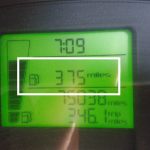“StoreDot and BP present world-first full charge of an electric vehicle in five minutes” runs the headline on this news item from BP which actually talks about an electric scooter. The Storedot website[1] at the time of writing was a bit more gung-ho about their new battery technology, which they claimed would enable a 5-minute full recharge of an electric car with 300 mile range[2]. Really?
Quick sense check: for a 300 mile range you’d be talking probably about a 100-kWh battery for which a 5-minute full recharge would demand 1.2 megawatts of charging capacity. That’s going to be some meaty charger. Moreover, even upping the charger voltage to 1,000 volts you’ll be drawing 1,200 amps, so I reckon the charger cables are going to need a pair of conductors of (say) 4 square centimetres cross section. And cars would need to be engineered with DC charging circuits to match …
I put these points to StoreDot and they pointed me to Chargepoint’s website which talks about “up to 500 kW” Express Plus charging using the CCS Type 2 connector, although as far as I know CCS2 goes nowhere near that rating and when those kinds of powers are achieved they are going to need thousand-volt water-cooled charging cables with thermal sensing on the plug because of the risk of overheated contacts.
Back to the scooter that BP had seen recharged in 5 minutes. The model in question has two 48V 31.9 Ah batteries (so about 3.1 kWh) which to recharge in 5 minutes would require a 37 kW charger – plausible in a non-domestic setting. I imagine the demonstration to BP involved removing the batteries to recharge them because obviously the scooter’s onboard electrics would not be designed to handle a charging current of 800 amps.
My colleague Daniel did some digging and unearthed this priceless video from StoreDot in 2014, purporting to show a smartphone being completely recharged in 30 seconds using battery technology that would be released in 2016 (update January 2023: I’m still waiting…). The sceptical comments are worth reading — especially the ones about fake phone screens, and indeed the ones about exploding phones — but you can’t help but notice in the video itself they are actually “charging” a huge battery glued to the back of the phone. So a big dose of scepticism is in order, I think, and if the link to the video no longer works you can guess why.
More credible is the news from April 2019 about battery developments using vanadium disulfide cathodes stabilised with a microscopic layer of titanium disulphide: this promises faster charging but they are careful not to say how much faster.
Postscript 13 January, 2023: Storedot hasn’t as far as we know actually released a product yet, but they have opened an ‘Innovation Hub’ in the U.S. Hooray!
[1] The web page that this article originally referred to has been moved
[2] This was in 2019: by 2022 StoreDot’s ambitions were more muted, manifested in a roadmap that would “see the delivery of mass produced battery cells capable of 100 miles of range in five minutes of charge by 2024, 100 miles in three minutes by 2028 and 100 miles in two minutes by 2032”.
 One method would be to use the trip computer display which will show the estimated remaining miles (see picture). The vehicle in question has a 45-litre tank: at its typical achieved average mpg, it has a range of 613 miles of which it has used 39%, so we can add 45 x 0.39 = 18 litres to our calculated fuel consumption. Note that we will need to deduct an equal amount from next week’s consumption, and this “carry forward” is likely to reduce the error in the adjustment.
One method would be to use the trip computer display which will show the estimated remaining miles (see picture). The vehicle in question has a 45-litre tank: at its typical achieved average mpg, it has a range of 613 miles of which it has used 39%, so we can add 45 x 0.39 = 18 litres to our calculated fuel consumption. Note that we will need to deduct an equal amount from next week’s consumption, and this “carry forward” is likely to reduce the error in the adjustment.
